As he grew up, he taught himself to paint. Then he decided to go to Dusseldorf, Germany to study with a group of artists. They toured Europe. He took photographs and made sketches from which he later painted landscapes. Sometimes he put himself in dangererous situations just to capture a particular scene. He stayed in Europe four years and then returned to the United States.
He painted the magnificent scenes in Yosemite. When people saw the paintings, they wanted to go there and see it for themselves. As a result, so many people went to Yosemite, that the land was no longer unspoiled, and Bierstadt went elsewhere to paint.
In 1859 the artist made a trip to the Colorado and Wyoming territories with Frederick Lander, who was in charge of a government survey expedition. He was inspired to paint this beautiful scene of the Rocky Mountains. Indians are encamped in the valley. They are not the main focus of the subject, but they are important to the overall effect. The mountains and the sky are the subject. He highlights certain areas of the painting to add interest. This is a large painting; six feet high and ten feet long.
Bierstadt was part of a group of artists called Luminists, a term which comes from the word luminous which means radiating or reflecting light. This group of artists used light in their paintings as Thomas Kinkaid does today. Notice Bierstadt's use of light in the paintings below.
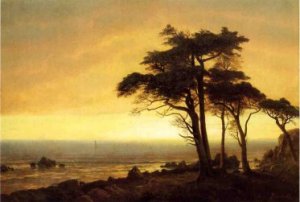
California Coast
Enlarge
Enlarge
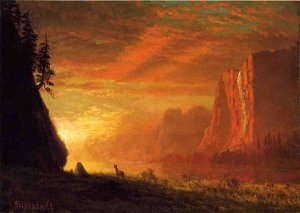
Deer at Sunset
Enlarge
Enlarge
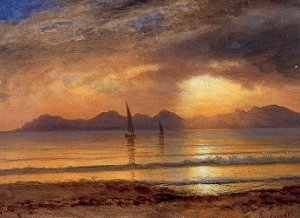
Sunset Over a Mountain Lake
Enlarge
Enlarge
After Colonel Lander died in the Civil War, Bierstadt named the highest peak in the painting Lander's Peak. The painting sold for $25,000 in 1865. That was a lot of money in those days. Later, it is said, he bought it back and either gave it to his brother or sold it to him.
In 1867 he married, and he and his new bride went to London. There he met with Queen Victoria. His wife, Rosalie, needed to live in a warm climate for health reasons. She lived in Nassau, and her husband began to paint the tropics of Nassau as a result of his stays there.
He died suddenly in 1902 and people seemed to forget his work until the 1960's. People became more interested in preserving our national lands, and his paintings began to be shown again.
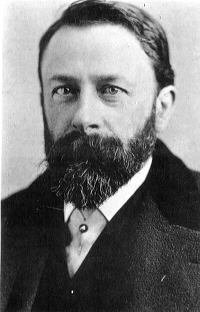
This biography was written by Patsy Stevens, a retired teacher.
References:
Wilder, Jesse Bryant. Art History for Dummies. Hoboken, NJ: Wiley Publishing Inc, 2007. Order

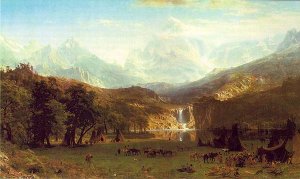
 A frequent question:
A frequent question: